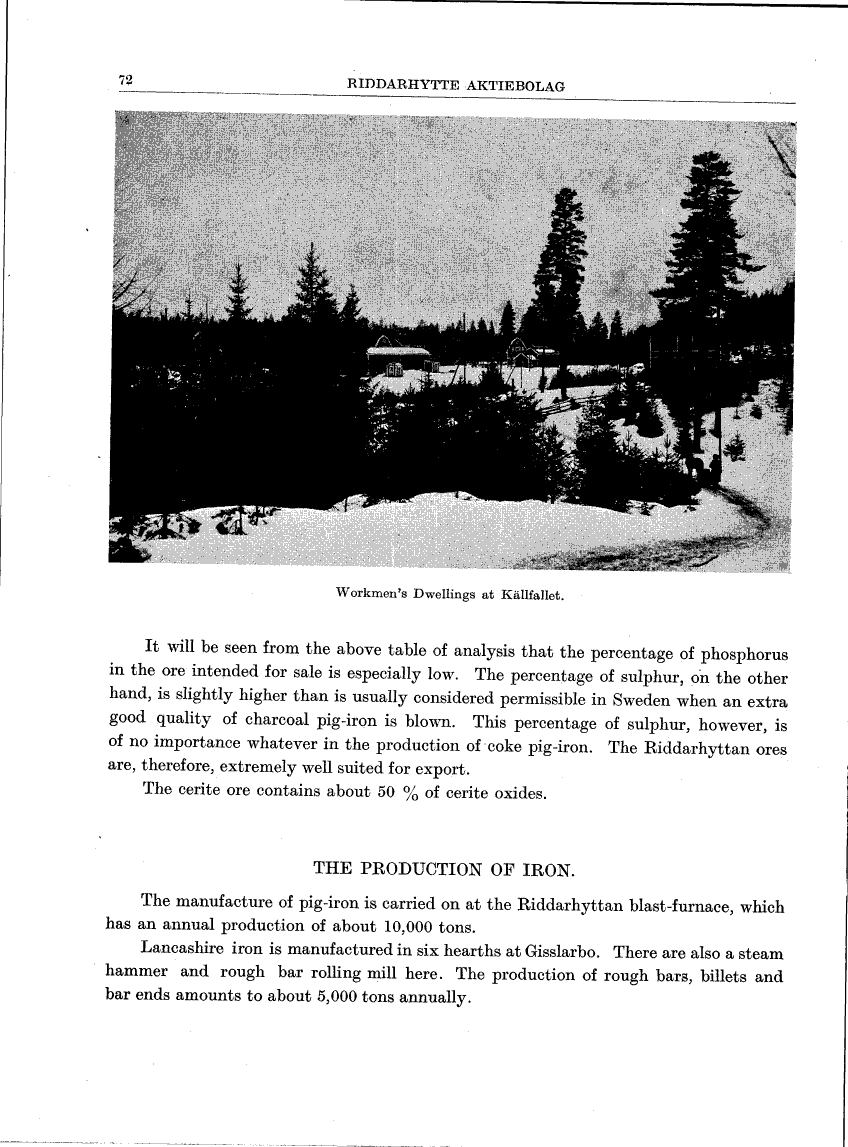
Full resolution (TIFF)
- On this page / på denna sida
- Riddarhytte Aktiebolag

<< prev. page << föreg. sida << >> nästa sida >> next page >>
Below is the raw OCR text
from the above scanned image.
Do you see an error? Proofread the page now!
Här nedan syns maskintolkade texten från faksimilbilden ovan.
Ser du något fel? Korrekturläs sidan nu!
This page has been proofread at least once.
(diff)
(history)
Denna sida har korrekturlästs minst en gång.
(skillnad)
(historik)
 |
| Workmen’s Dwellings at Källfallet. |
It will be seen from the above table of analysis that the percentage of phosphorus
in the ore intended for sale is especially low. The percentage of sulphur, on the other
hand, is slightly higher than is usually considered permissible in Sweden when an extra
good quality of charcoal pig-iron is blown. This percentage of sulphur, however, is
of no importance whatever in the production of coke pig-iron. The Riddarhyttan ores
are, therefore, extremely well suited for export.
The cerite ore contains about 50 % of cerite oxides.
THE PRODUCTION OF IRON.
The manufacture of pig-iron is carried on at the Riddarhyttan blast-furnace, which
has an annual production of about 10,000 tons.
Lancashire iron is manufactured in six hearths at Gisslarbo. There are also a steam
hammer and rough bar rolling mill here. The production of rough bars, billets and
bar ends amounts to about 5,000 tons annually.
<< prev. page << föreg. sida << >> nästa sida >> next page >>
Project Runeberg, Mon Dec 11 21:48:46 2023
(aronsson)
(diff)
(history)
(download)
<< Previous
Next >>
https://runeberg.org/steelswe/0140.html




